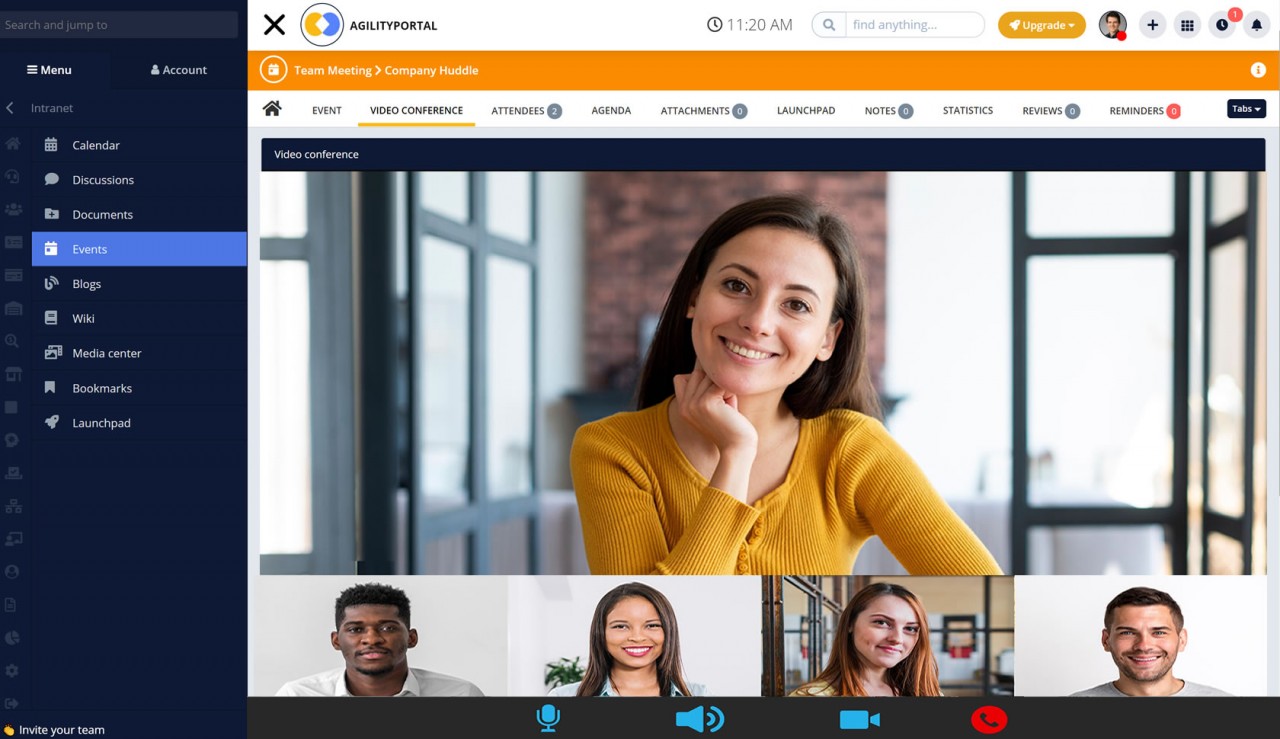Insight Blog
Agility’s perspectives on transforming the employee's experience throughout remote transformation using connected enterprise tools.
5 minutes reading time
(1072 words)
5 Things that define your company's intranet success
Let's take a look at some of the most common mistakes that companies make which can cause an intranet to fail. 75% of Intranets implementations fail.
Intranet users go to considerable lengths to put new intranet platforms in place. They must spend hours obtaining information from end-users and investigating solutions while working under tight financial resources. The inevitable back-and-forth with the chosen vendor or consultancy follows as the two sides collaborate to create the ideal intranet for the company's needs.
Despite the fact that an intranet takes a lot of time, effort, and money to develop, firms often make little or no effort to evaluate how beneficial it is.
It's critical to evaluate the effectiveness of your intranet if you want to be successful. Monitoring performance and using the information gained to improve the intranet's efficacy will guarantee that it remains relevant and, more importantly, a valuable resource for employees.
Before your any Intranet success, let's look into the reasons behind intranets failures
It's critical to assess your intranet's effectiveness if you want to be successful. Monitoring performance and applying what you learn to improve the intranet's efficacy will make it a valuable resource for employees.
You need to consider many elements, such as features, needs, audience, and corporate size; thus, there is no one-size-fits-all strategy to analyzing intranet effectiveness. To determine whether or not you are making progress, you must first decide what you want to assess and then track the outcomes over time. More importantly, you need to know why most of the intranets fail.
1. Bad user experience
Many intranets have a poor user experience, which causes users to become frustrated and abandon them. Users today have high expectations from the commercial websites they visit on a daily basis. The intranet is doomed if it can't deliver a fantastic user experience across numerous device forms.
2. Inability to "find" relevant information
The intranet's search capabilities are notably weak. This happens due to limited tagging and content categorization, which allows the search to return more relevant results.
3. Poor content organization
The information architecture and navigation of a great intranet are based on how people search for content, not on a fixed organizational hierarchy.
4. Information that is no longer valid
The intranet is frequently used as a corporate "trash drawer." Users lose interest and stop coming if the content does not change. Do you still require that 1998 travel policy? Almost certainly not!
5.Lack of social media portal
Intranet solutions which fail to incorporate the social features. Understanding the social needs and willingness to adopt intranet strategies is key. Social features help you to improve employee engagement. It can also keep you updated about what your employees are doing. Likewise, the coworkers can also communicate with each other and share what they are doing on a regular basis.
Factors that define your company's intranet success
1. The number of logins and the amount of time spent
Let's start with the things that can be measured easily. On the intranet and, if applicable, the mobile app, keep track of how many users check-in, how frequently they do so when they do so, and how long they stay connected. This KPI gives you a good idea of how engaged your intranet users are.
This indicator can be tracked using your system's built-in analytics features or by adding an external service like Google Analytics.
2. Engagement of the employees
It's a great sign if a large number of users join your intranet on a daily basis. However, it does not mean that those users will interact with the content. Your intranet should serve as a hub for corporate communication. That's why you'll want to keep track of link clicks as well as social interactions like likes, comments, and tags. The amount of content that is published and edited is also an excellent statistic for determining engagement.
3. Reach and visibility of content
Employees may access information whenever and wherever they need it with the help of modern intranets.
This performance indicator can be tracked using your system's built-in analytics or by adding an external service like Google Analytics. Divide the number of unique visitors in a given time period by the total number of employees to get your total reach. You can get the number of visits per user by dividing the total number of visits by the number of unique visitors.
4.Decline in costs
An intranet can help you save money in a variety of ways. By combining chat and video conferencing, you can save money on travel and phone calls. By digitizing documents, you can save money on printing. Integrate an ideation process to lower the cost of innovation. Alternatively, you can lower employee turnover costs by ensuring that their voices are heard so that they do not lose interest in their jobs and leave.
5. Time management
Streamline day-to-day tasks and integrate your other corporate products with the intranet to boost efficiency. By digitizing approval processes, you can save time. Increase the speed of the onboarding process. Stop wasting time looking for knowledge or competence. Reduce the amount of time you spend checking your email. By using a self-service strategy, you may relieve the load on your IT Support team, and it will encourage them to handle other tasks.
Why AgilityPortal is a perfect choice
AgilityPortal has all the features that you need for your company's intranet success. The social aspect of the intranet is its specialty, and it also provides a top-notch user experience. AgilityPortal enables leaders to foster a digital culture across remote teams, resulting in increased employee engagement and productivity. It is the ideal solution for any size company trying to increase internal communications and production efficiency. It has features that can ensure an intranet's success, including:
- -Social Portal: Users can like, comment, share, #tag, and @mention colleagues. It enables two-way communication and improves internal networking.
- -Collaboration: It has group spaces that give a home for resources, debate, news, and ideas pertaining to a specific department or issue. It can help you collaborate more effectively.
- -Experience management: You can create simple digital experiences with an easy-to-implement Pages and Widgets structure.
- -Seamless integration: You can easily connect your existing tools to AgilityPortal.
- -Designed for non-technical users: It has an intuitive CMS that streamlines content production. Thus, department leaders and key stakeholders can take control of the intranet.
Categories
Blog
(2586)
Business Management
(318)
Employee Engagement
(204)
Digital Transformation
(172)
Intranets
(119)
Growth
(117)
Remote Work
(61)
Sales
(48)
Collaboration
(37)
Culture
(29)
Project management
(29)
Customer Experience
(26)
Knowledge Management
(21)
Leadership
(20)
Comparisons
(5)
Ready to learn more? 👍
One platform to optimize, manage and track all of your teams. Your new digital workplace is a click away. 🚀
Free for 14 days, no credit card required.















